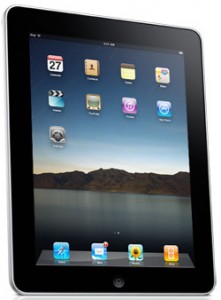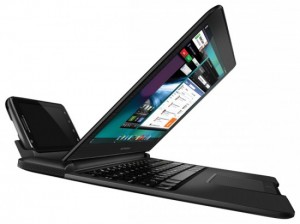Smartphones Tomorrow

My smartphone journey Part 1 Part 2 Part 3 was a real trip down a geeky memory lane. It was also a reminder of lessons learned and ways to spot innovations doomed to failure. We can use the success and failure of past products to predict new and future product performance. Economic, political and other business factors can influence the accuracy of these projections, but they can still be quite informative.
As we look to the future of smartphones a number of trends jump out at me:
- The giant smartphone,
 also known as the tablet
also known as the tablet, is a very interesting phenomenon. Following on the heels of the netbook
boom, the tablet form factor has captured the public’s imagination. It remains to be seen where the iPad and Android tablets fit in our collective consciousness but one thing we know for sure: people will buy devices that work like giant smartphones and use them for entertainment and basic communications. I have been observing the many in my circle who have purchased tablets. The vast majority of them use the same applications they use on their phones. I have not identified any consistently adopted applications that are tablet only. There are a few who will edit documents and look for more desktop functionality. The vast majority simply like the larger screen. The moral I see from this story is we will continue to see screen size increase. Especially those over forty need the additional size for accessibility reasons. Another interesting question is how far the giant smartphone os can go. Can it continue to scale to full desktop replacement or even entertainment center use? It seems plausible.
- Flexible and folding screens are almost here. If there was any trend that had the potential for changing everything, this is it. Think about the possibilities afforded by this feature. Pocket sized devices that open into tablet sized workspaces, wearable displays, ergonomically shaped displays, all of these appear to be on the horizon. Our world of flat 4:3 or 16:9 lcds is about to get turned upside down. This technology has the potential to affect every aspect of the industry, a far more disruptive technology than 3d. The impact on smartphones is unclear. Will we migrate to wrist worn displays that communicate with the smartphone in the pocket? Will the folding tablet described earlier be something the public will buy? These are all questions left to be answered. I for one am watching this tech develop with great anticipation.
- A true cheap smartphone for the masses is just around the corner. We are already seeing very inexpensive devices being introduced by carriers. This trend looks like it will continue and we will likely see what we consider a basic no frills smartphone become the low-end of the future. We will slowly see the end of basic voice only phones, carriers will find it increasingly advantageous to move their entire customer base to either ios or Android. The impact this has on consumer buying habits will be interesting. Will there be a change in the features desired by laptop or tablet buyers if certain needs are met in a cheap device? Will we find people in lower income brackets canceling other services and focusing their income on the portable entertainment device in their pocket? AT&T will be interesting to watch when considering this question. They play in multiple markets and are most prone to protective business practices.
There are also a few trends that seemed doom to end or limited to niche status:
- Small wifi tablets from anyone except Amazon. The Kindle Fire excluded, it seems really obvious consumers do not want to buy something with a 6″ or 7″ screen. These devices do not add enough real estate relative to smartphones on the market, and they cost almost as much as their 10″ counterparts. The Kindle Fire
can succeed at this size simply because it has the killer app. Content is king and Amazon has it in spades. I believe this will be a very popular device with the demographic currently serviced by Apple, they should be very concerned.
- Any non ios or Android based device will continue to fade from the marketplace. For all their failings, HP is a smart company. They very quickly realized they were too late to market and aborted a platform doomed from the beginning. Too little, too late from the formerly very successful group. It appears that, like in the case of the pc, we are destined for a two player world. Apple vs Android ecosystem seems to be the end game. We will likely see more forked versions of android similar to what Amazon and others have done. It is too open of a platform and too stable to start over. I found it humorous reading about the linux community planning to respond to the tablet market by 2015. 2015? Seriously? Sorry, Microsoft, you missed your chance for this space. Nobody is going to accept your approach to product development. These days we expect devices to simply work, not something you are very good at.
- Keyboards or keypads of any type appear to be on the outs. As haptic feedback improves there will be less need for the physical keys some of us know and love. Like the typewriter before it QWERTY is on his last legs…
 The lapdock is an interesting idea, but not a good one. I apologize for being cynical but I do not believe many consumers will pay the price of an expensive netbook for a phone accessory. This lack of full computing capability is what doomed the Foleo, Chromebooks, and Smart Displays of the past. Nice idea, automatic fail.
The lapdock is an interesting idea, but not a good one. I apologize for being cynical but I do not believe many consumers will pay the price of an expensive netbook for a phone accessory. This lack of full computing capability is what doomed the Foleo, Chromebooks, and Smart Displays of the past. Nice idea, automatic fail.
It is always fun to look into the future and make a guess. I am certain of one thing, I will not be completely correct on any of these assessments. I do, however, believe some of this will play out as I expect. I do see that it should be a fun decade for the technology we currently know as the smartphone!
No comments yet.